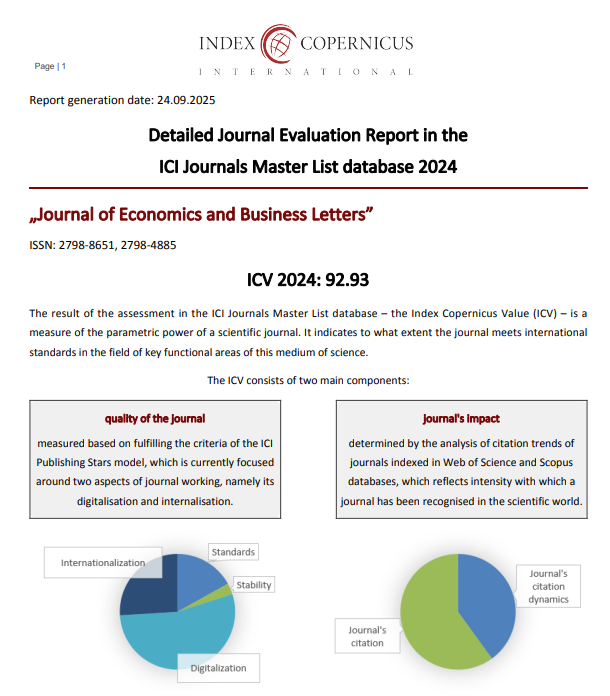Competence, human values, and career planning as joint drivers of individual performance: Evidence from KPP Pratama Jakarta Pasar Minggu
DOI:
https://doi.org/10.55942/jebl.v5i1.884Keywords:
employee competence, human values, career planning, performance appraisal, public administrationAbstract
This study tests whether three human-capital levers—employee competence, internalization of core public-service values, and career planning—jointly predict individual performance in a frontline Indonesian tax office (KPP Pratama Jakarta Pasar Minggu). Anchored to the Ministry of Finance’s Balanced Scorecard architecture, performance is operationalized in line with Nilai Kinerja Pegawai (NKP), combining target attainment (CKP) and multi-rater behavioral scores. Using a cross-sectional survey of structural and functional staff, we validated scales for the three predictors and estimated their effects on performance. Bivariate correlations show the strongest association for competence (r ≈ 0.54), followed by career planning (r ≈ 0.37) and the human values system (r ≈ 0.30). In multivariate models, the trio explains ≈41.6% of variance in NKP, with competence emerging as the most influential single predictor while values and career planning add distinct, meaningful contributions. Descriptives point to high endorsement of ethical conduct and service behaviors, yet signal headroom in feedback, reward fairness, and structured career pathways. Managerially, a dual track is clear: deepen role-specific competence (case-based learning, coaching, job aids) and operationalize values and career scaffolding (transparent recognition, “learn-from-mistakes” routines, formal IDPs and rotations) through the NKP review cadence. These interventions align systemically with how performance is actually measured and rewarded, improving both throughput and citizen experience.
References
Campion, M. A., Fink, A. A., Ruggeberg, B. J., Carr, L., Phillips, G. M., & Odman, R. B. (2011). Doing competencies well: Best practices in competency modeling. Personnel Psychology, 64(1), 225–262. https://doi.org/10.1111/j.1744-6570.2010.01207.x
Chan, Y. C. L. (2004). Performance measurement and adoption of balanced scorecards: A survey of municipal governments in Canada. International Journal of Public Sector Management, 17(3), 204–221. https://doi.org/10.1108/09513550410530144
De Vos, A., & Soens, N. (2008). Protean attitude and career success: The mediating role of self-management. Journal of Vocational Behavior, 73(3), 449–456. https://doi.org/10.1016/j.jvb.2008.08.007
Kaplan, R. S., & Norton, D. P. (1996). The Balanced Scorecard Podsakoff, P. M., MacKenzie, S. B., Lee, J.-Y., & Podsakoff, N. P. (2003). Journal of Applied Psychology, 88(5), 879–903. https://doi.org/10.1037/0021-9010.88.5.879
Robbins, S. P., & Judge, T. A. (2013). Organizational behavior (15th ed.). Boston, MA: Pearson.
Sanchez, J. I., & Levine, E. L. (2009). What is (or should be) the difference between competency modeling and traditional job analysis? Human Resource Management Review, 19(2), 53–63. https://doi.org/10.1016/j.hrmr.2008.10.002
Schein, E. H. (2004). Organizational culture and leadership (3rd ed.). San Francisco, CA: Jossey-Bass.
Spencer, L. M., & Spencer, S. M. (1993). Competence at work: Models for superior performance. New York, NY: John Wiley & Sons.
Treviño, L. K., Weaver, G. R., & Reynolds, S. J. (2006). Behavioral ethics in organizations: A review. Journal of Management, 32(6), 951–990. https://doi.org/10.1177/0149206306294258
Downloads
Published
How to Cite
Issue
Section
License
Copyright (c) 2025 Natalina Ariyani

This work is licensed under a Creative Commons Attribution 4.0 International License.
















